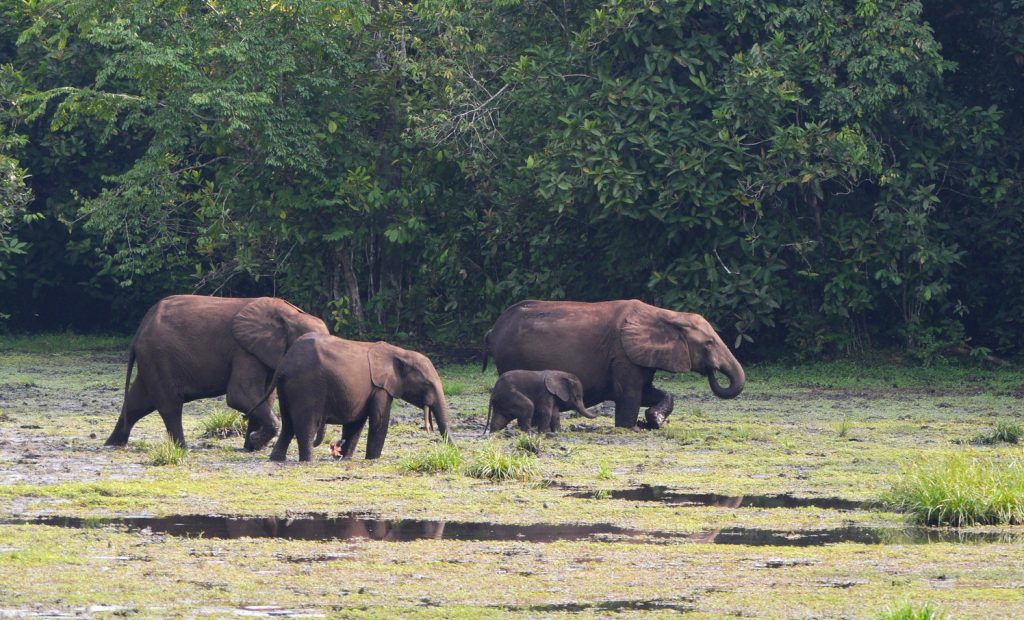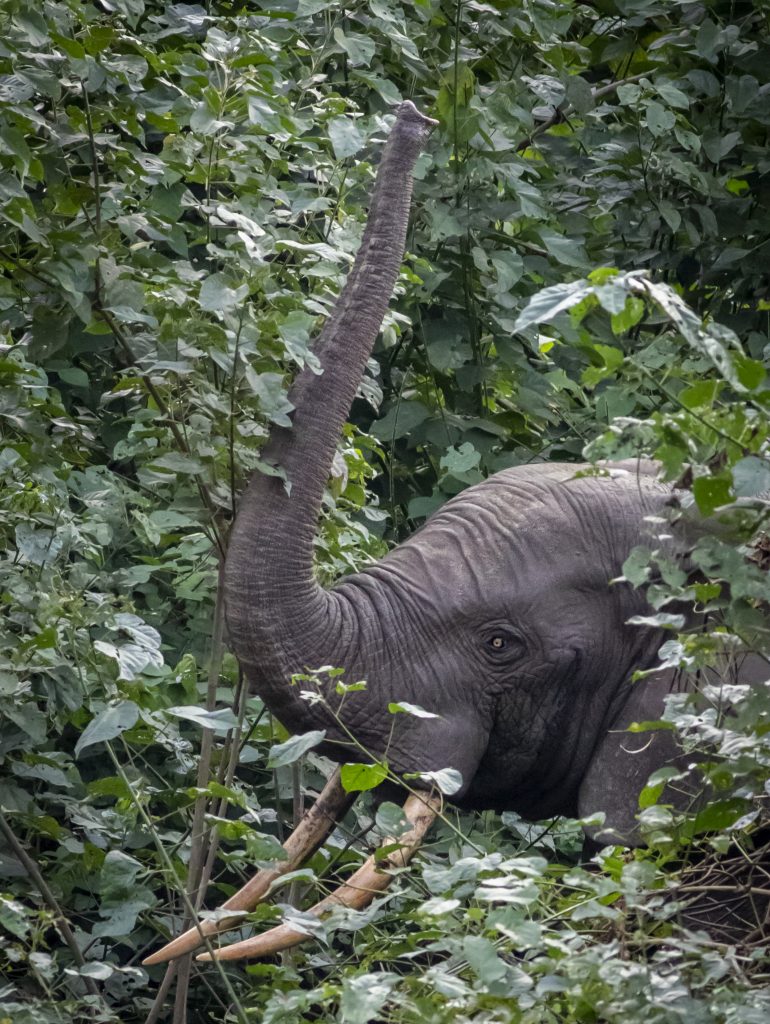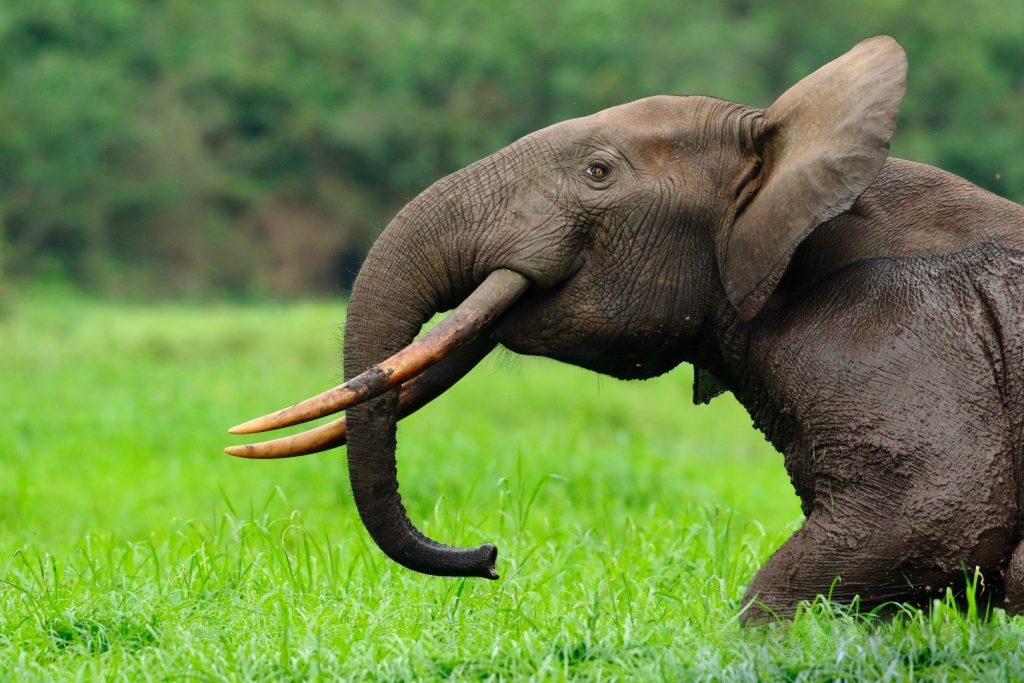July 15, 2019
Every five minutes, an animal species goes extinct.
With more than 7,000 species throughout the world on the endangered species list, animals are more vulnerable of disappearing than ever. Among those is the forest elephant—one of the last remaining megaherbivores on Earth.
Native to Africa, the forest elephant species was once widespread throughout central and west Africa. With the colonization of west Africa by Europeans came the demand for ivory and habitat destruction, and consequently the forest elephant population drastically dropped. Today, the elephant species has declined to less than 10 percent of its original size.
Like most megaherbivores, this species can have important effects on ecosystems and biogeochemical cycles. Yet, the influence of elephants on the structure, productivity and carbon stocks in Africa’s rainforests remain largely unknown. What does a decrease in this species mean for the planet?
A team of researchers, including lead author Fabio Berzaghi of the Laboratory of Climate and Environmental Sciences (CEA) in France and co-author Christopher Doughty, faculty member in the School of Informatics, Computing, and Cyber Systems at Northern Arizona University, have long studied the impacts large land mammals have on the Earth’s ecosystem. Previous studies on the forest elephants hypothesized that the species engineer forests by dispersing seeds, moving nutrients and trampling small trees.
In hopes of finding out what this means for the planet, scientists turned to the forests. Field measurements were collected in the Congo Basin which compared the number and size of trees between different forests—some affected by elephants and some in which elephants had been eradicated. Their findings were recently published in Nature Geoscience.

Photo credit: Matt Muir
“The data confirmed that though fewer trees are present in areas inhabited by elephants, the forests contain larger trees and higher abundances of hardwood species (trees with higher carbon content),” Doughty said.
Because forest elephants affect long-term forest processes (greater than 50 years), their impact on the environment is difficult to observe in field experiments. With the help of a computer model that simulates the long-term effect of elephants on forests, the team was able to see how the number of elephants impact the different types of trees present, and how these mammals affect forest structure, biomass and potential for carbon storage.
“Our simulations suggest that if elephant loss continues unabated, central African forests may release the equivalent of multiple years of fossil fuel CO2 emissions from most countries, thus potentially accelerating climate change.”
“Their loss could have a drastic impact both locally and on global climate.”
Berzaghi
Without forest elephants to mitigate overgrowth, forests will become crowded with small, soft-wood trees with nowhere to grow. These small trees mean lower carbon content, provoking a significant loss of carbon storage in biomass. As a result, central African forests could lose up to three billion tons of carbon.
“As the largest land mammal on the planet is systematically wiped out, so are its myriad roles in forest function,” Doughty said. “For instance, fewer elephants would reduce seed and nutrient distribution as well as forest carbon content, which could impact global climate.”

The good news, according to the researchers, is that forest elephants aren’t gone yet. By protecting this species and allowing their populations to recover, this trend in carbon loss can be stopped and reversed.
“Forest elephants are the gardeners and guardians of biodiversity in the Congo Basin,” said Stephen Blake, assistant professor of ecology at St. Louis University and one of the paper’s authors. “Protecting and expanding the remaining populations of forest elephants in Africa will not only save forests but also help fight climate change.”
“Our study shows that even at high population densities, forest elephants continue to improve the carbon storage potential of central African forests,” Berzaghi said. “This species not only thins the forest but disperses seeds widely, assisting the germination of more than 100 tree species, which provide food and habitat for primates, birds and insects.”

Carly Banks | NAU Communications
(928) 523-5582 | carly.banks@nau.edu



